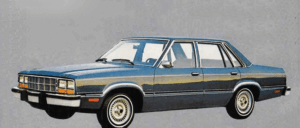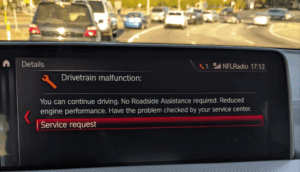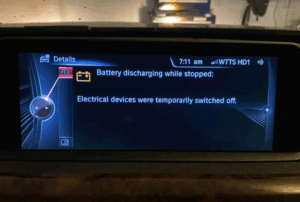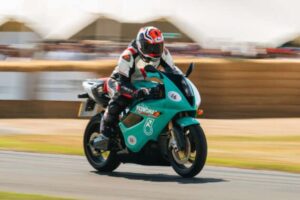“Take it up to 8,250 rpm, it can take it,” friend and owner Max Godges prods me, encouraging me to cane his 1994 Mazda RX-7 harder than I’ve ever driven anyone else’s car. We crest over a small undulation on the hilly road as the mountain pass between Goodsprings and Sandy Valley on the Nevada-Cali border calls out to us. Thankfully, this rotary-powered Mega Miata is as enthused about the prospect of hooliganism as its owner.
And so I charge in, winding out third gear until the Beyblade under the hood slams into a hard fuel cut for a brief moment, with enough time to grab fourth for a mere second before braking. The exhaust cracks and chops as the rotary bounces off its limiter with a soft but distinct pop-pop-pop!
“Heh. Fun, ain’t it?” is the only feedback I receive as we glide over the last hill and disappear around the first bend. Funny enough, I was never a big rotary fan growing up for all-wheel-drive and/or inline-six reasons. But now, I see. The Zoom Zoom cultists are on to something.
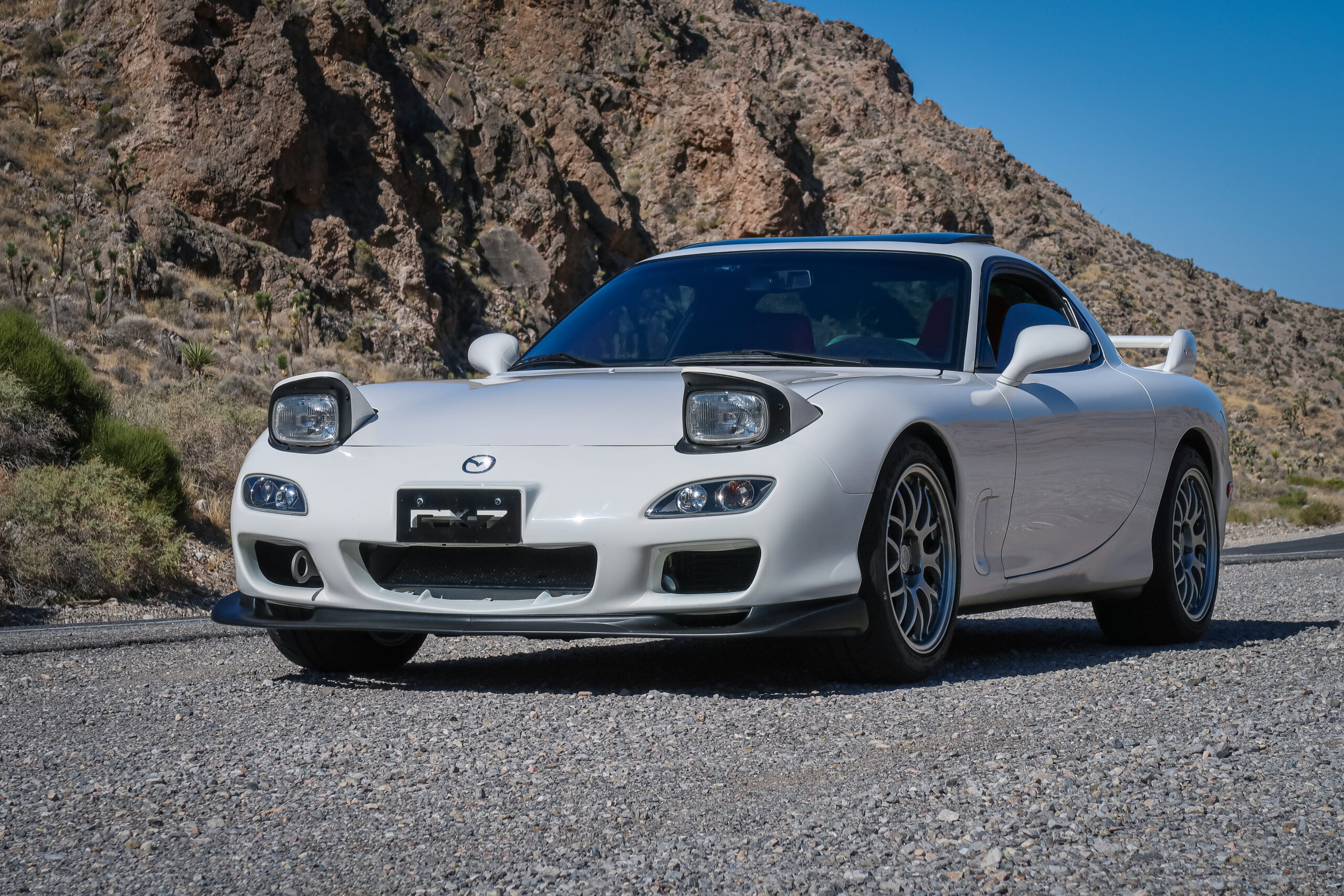
A Hero Car of The Gran Turismo Era
The FD generation was the last of the RX-7s, praised in in-period car reviews for its potent engine and fleetfootedness. In some Best Motoring shootouts, it even beat titans like the Skyline GT-R around handling courses. However, it was also criticized for mediocre interior build quality and reliability issues with long-term testers–Car and Driver’s tester infamously made nine unscheduled dealer visits over 35,000 miles.
Specs:
Current Values: $30,000 to $50,000 (based on spec, mileage, and condition)
Powertrain: 1.3L twin-turbocharged Wankel two-rotor//5-speed manual
Horsepower: 255 horsepower @ 6,500 RPM (stock USDM models), approx. 360 horsepower (current)
Torque: 217 pound-feet @ 5,000 RPM (stock USDM models)
Seating Capacity: 2 (USDM models), 4 (JDM models)
Cargo Volume: 5.7 cubic feet
MPG: 17 city, 25 highway, 23 combined
Curb Weight: approx. 2,780 pounds
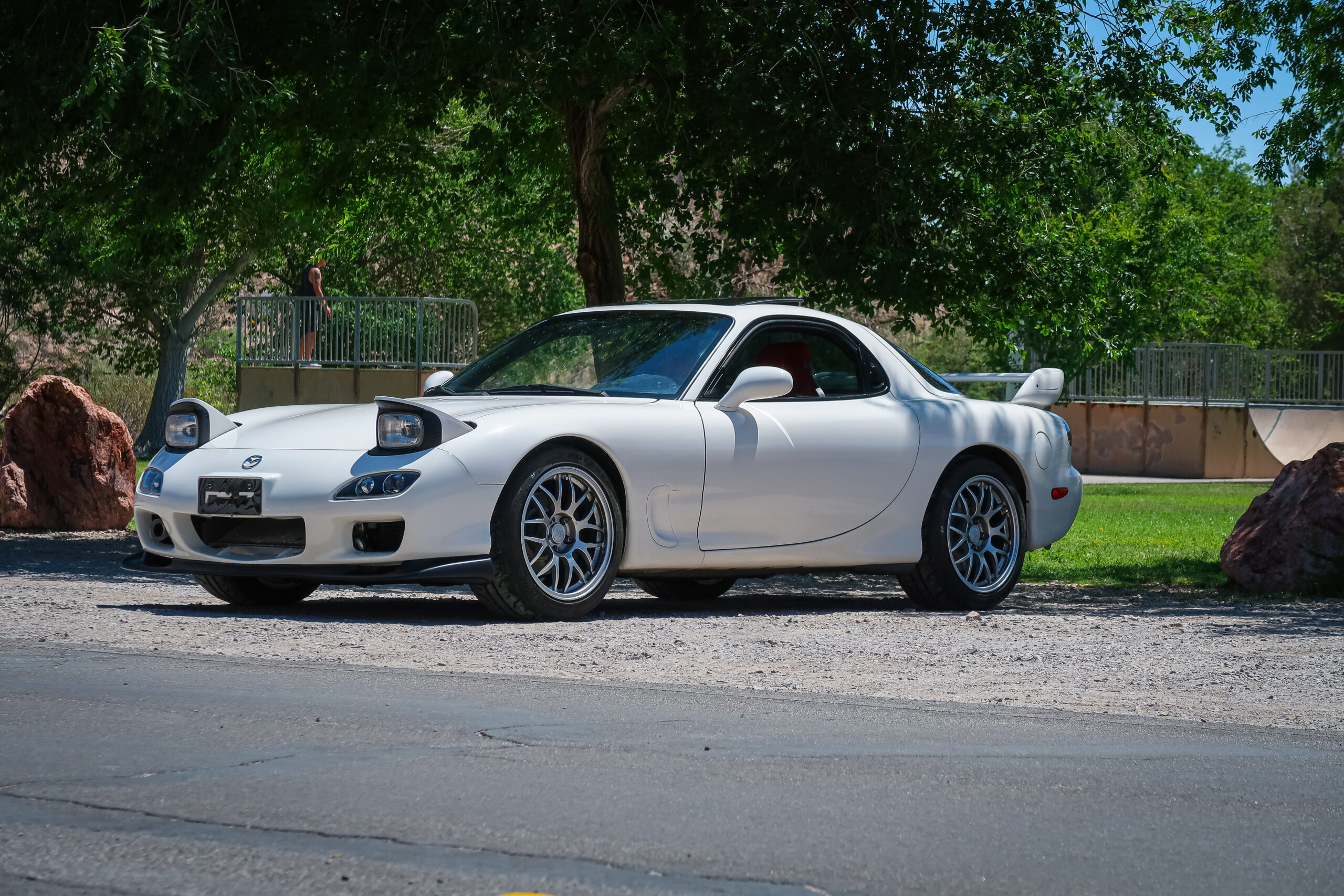
Less than 14,000 USDM FD RX-7s exist out of 69,000-plus FD RX-7s produced globally between 1992 and 2002. That relative commonness, combined with its temperamental engine and perceived build quality hiccups, kept resale values in check as its peers soared far beyond the heliopause. With its hike into the $30,000 to $40,000 range for decent examples, still noticeably less than similar-condition Skylines and Supras, people tread cautiously.
This white USDM RX-7, minty fresh with less than 30,000 miles on the clock, begs to differ and makes a case for a reliable rotary, if such a thing can exist. Mimicking the coveted Spirit R in appearance, its modifications go deep beneath the skin, utilizing knowledge honed over decades of the platform’s cult following.
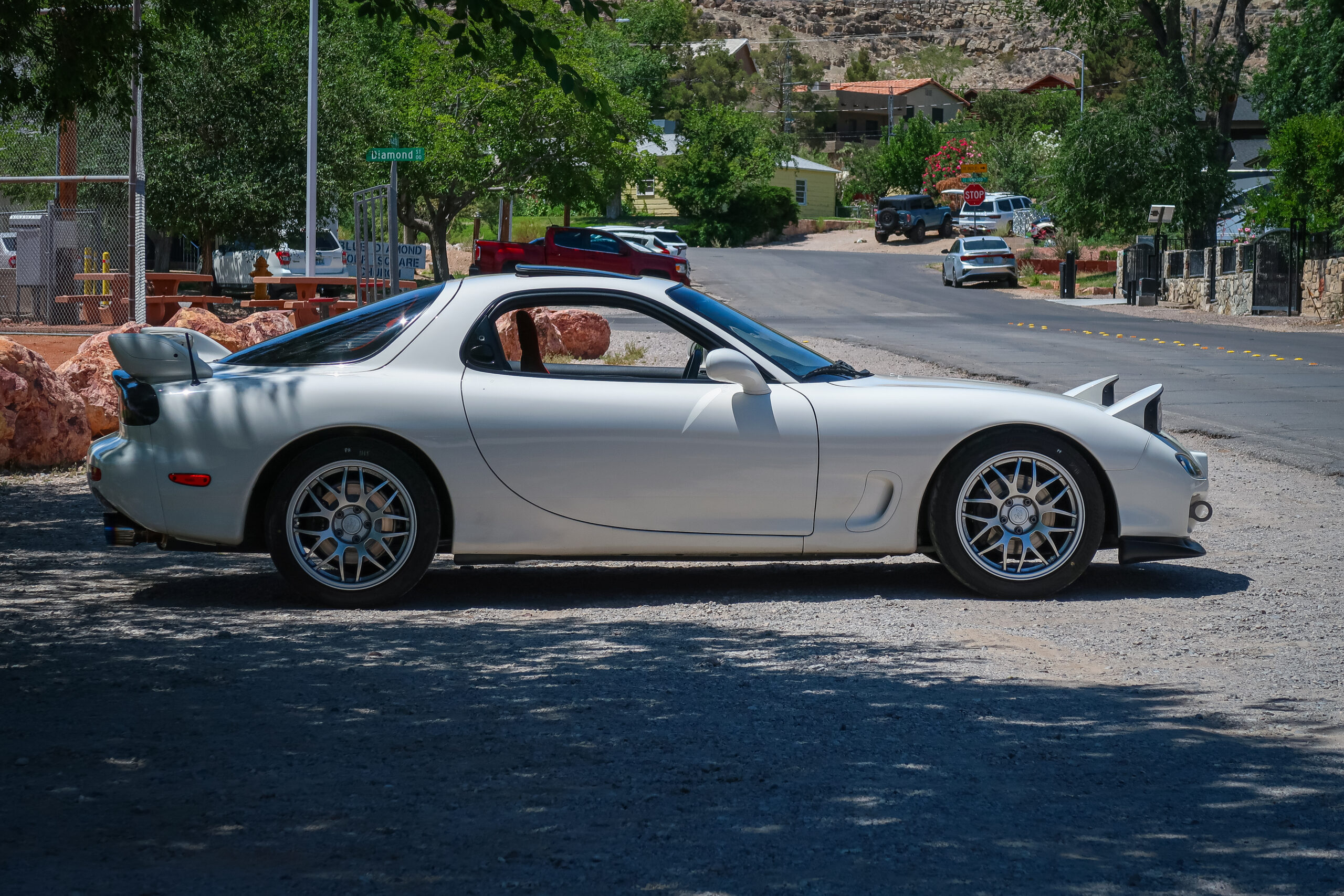
Built By A Honda Guy, Taught On The Internet
Godges sought to treat himself following his transition from university to the workforce a decade ago. His dream car was a Honda NSX, which had become unobtanium on the second-hand market to people just entering a new career. However, a low-mile FD under the care of its original and now-geriatric owner, who purchased it brand new here in Vegas in 1993, presented itself. Honda or not, it was too pristine to pass up.
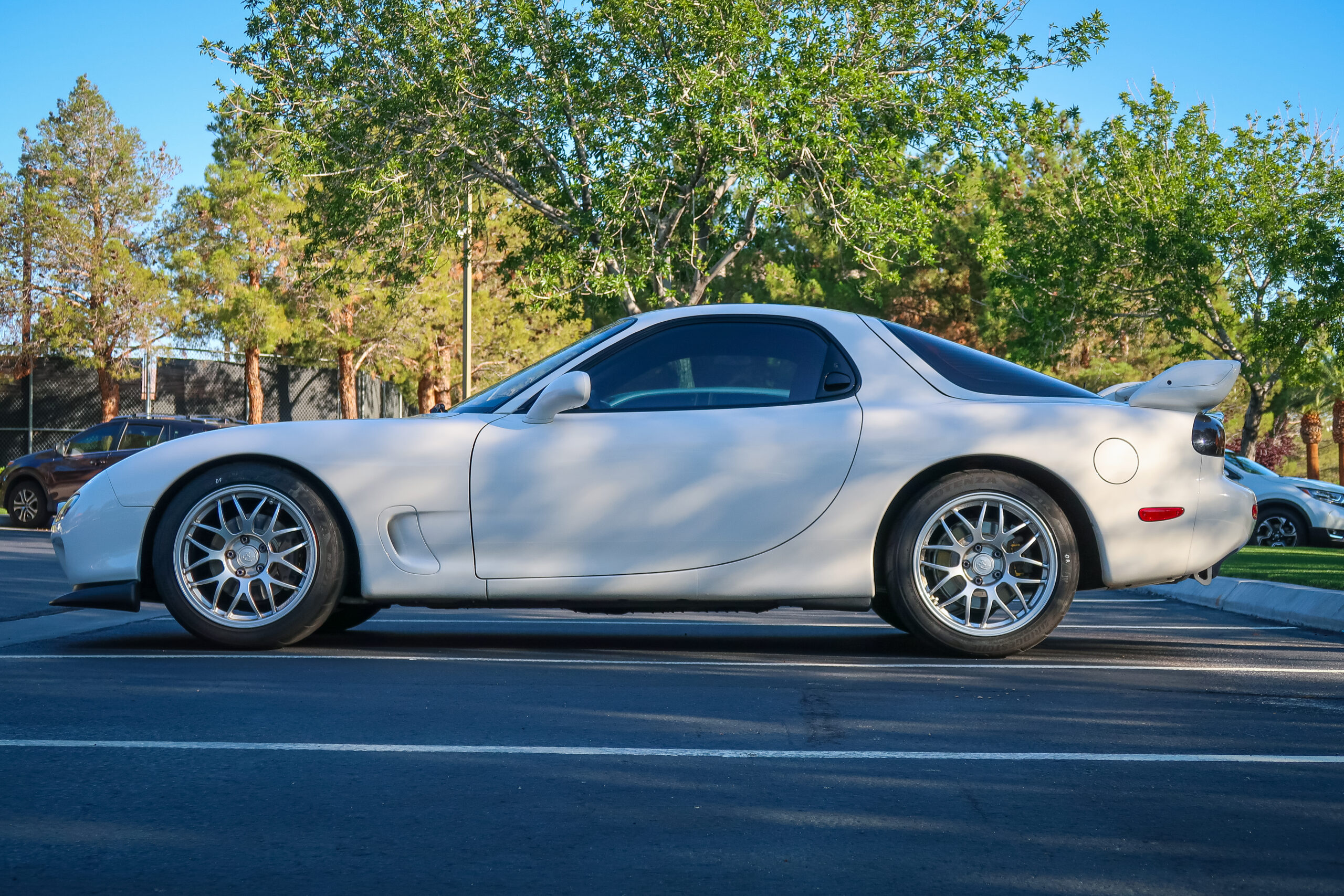
“I feel bad because this thing was never my dream car,” Godges reflects. “I’m more of a Honda guy. Even the color scheme with the Spirit R seats, I found cool because it kind of mimics the Honda Type Rs. But I know for many people, this car in this state of build is their dream car. But you know? It grew on me.”
An engineer by trade, Godges fell enamored with the rotary’s allure, anyway, and sought to extract every ounce of potential without harming its inherent character or everyday usability. Within the first three years, his RX-7 slowly transitioned from being an old man’s time capsule into an understated track star, focusing on accessible performance and enhanced reliability thanks to the abundance of support he found online.
“You delete the oil metering pump because it’s a potential failure point, and you get more consistent lubrication with premix,” he explains. “Once that’s done, you can switch to fully synthetic oil and have its benefits without worrying about burning it because your seals are only lubricated with premix, and the engine oil only lubricates everything else. You get better overall lubrication and almost no oil consumption.”
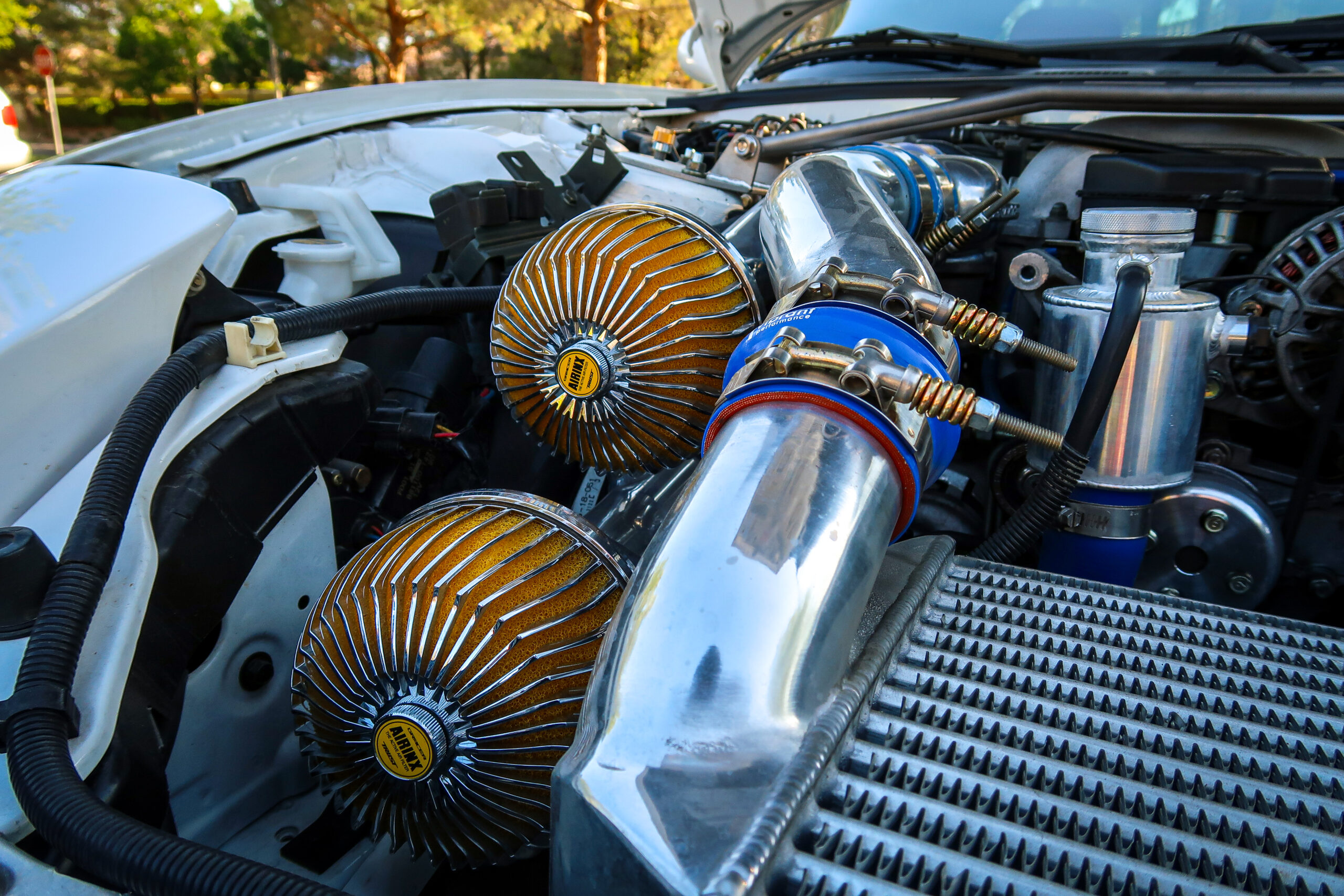
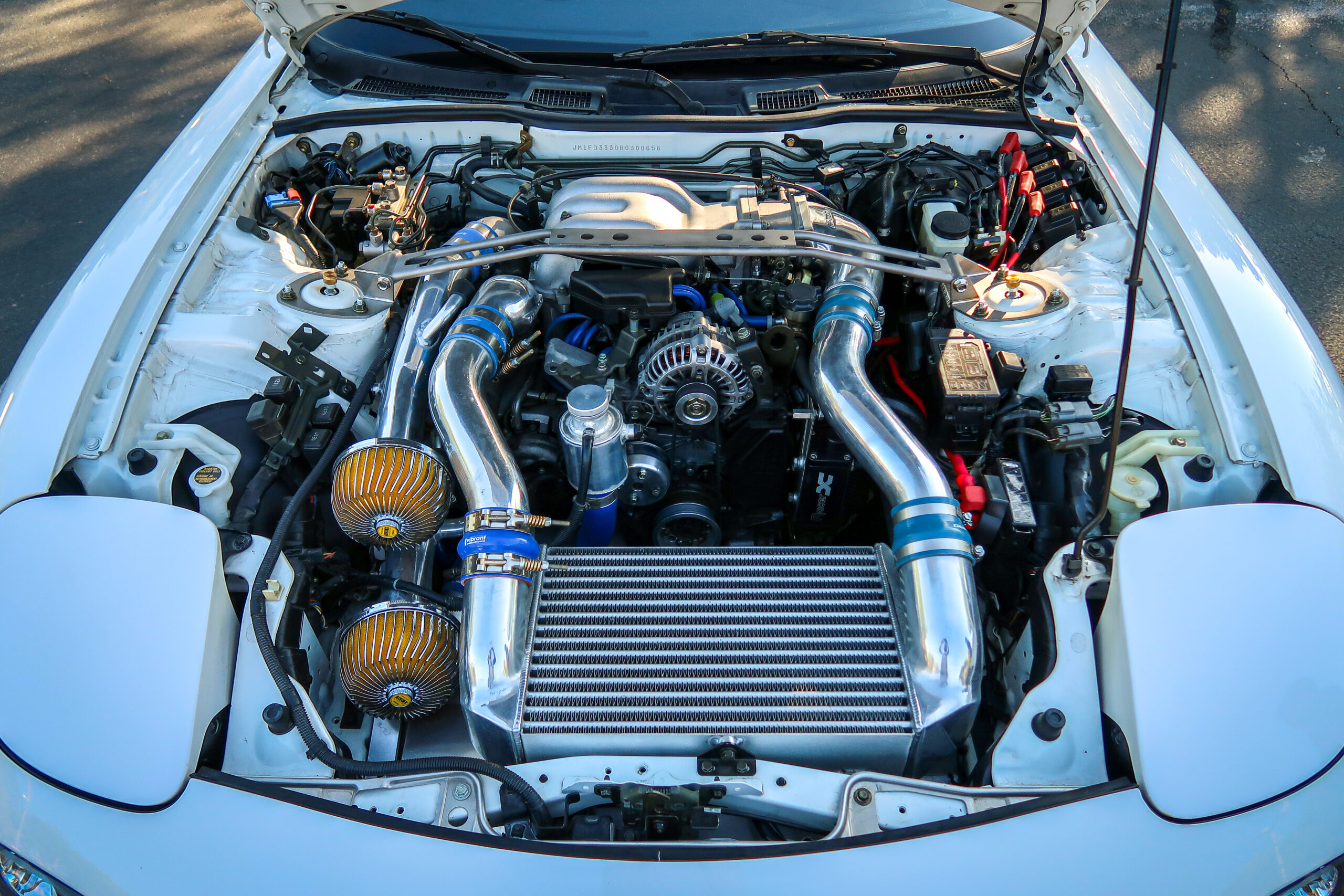
Other decisions include switching to pure coolant in an unpressurized cooling system to reduce the chances of blowing hoses or corroding hardware, negating the reduced cooling capacity with a much larger Koyorad radiator. A GReddy V-mount intercooler dominates the engine bay and chills heat-soaked intake temps from the unshielded air intake and the rotary’s inherently high operating temperatures. Anything rubber has been converted to silicone.
“None of this is made-up stuff. This is actually advice from Mazdaspeed themselves, things they tell owners that want to use their street cars for sportier applications, since a lot of what’s stock is there for economy and emissions. These are the same techniques they use on their 787B race car or like their 20B race engines.”
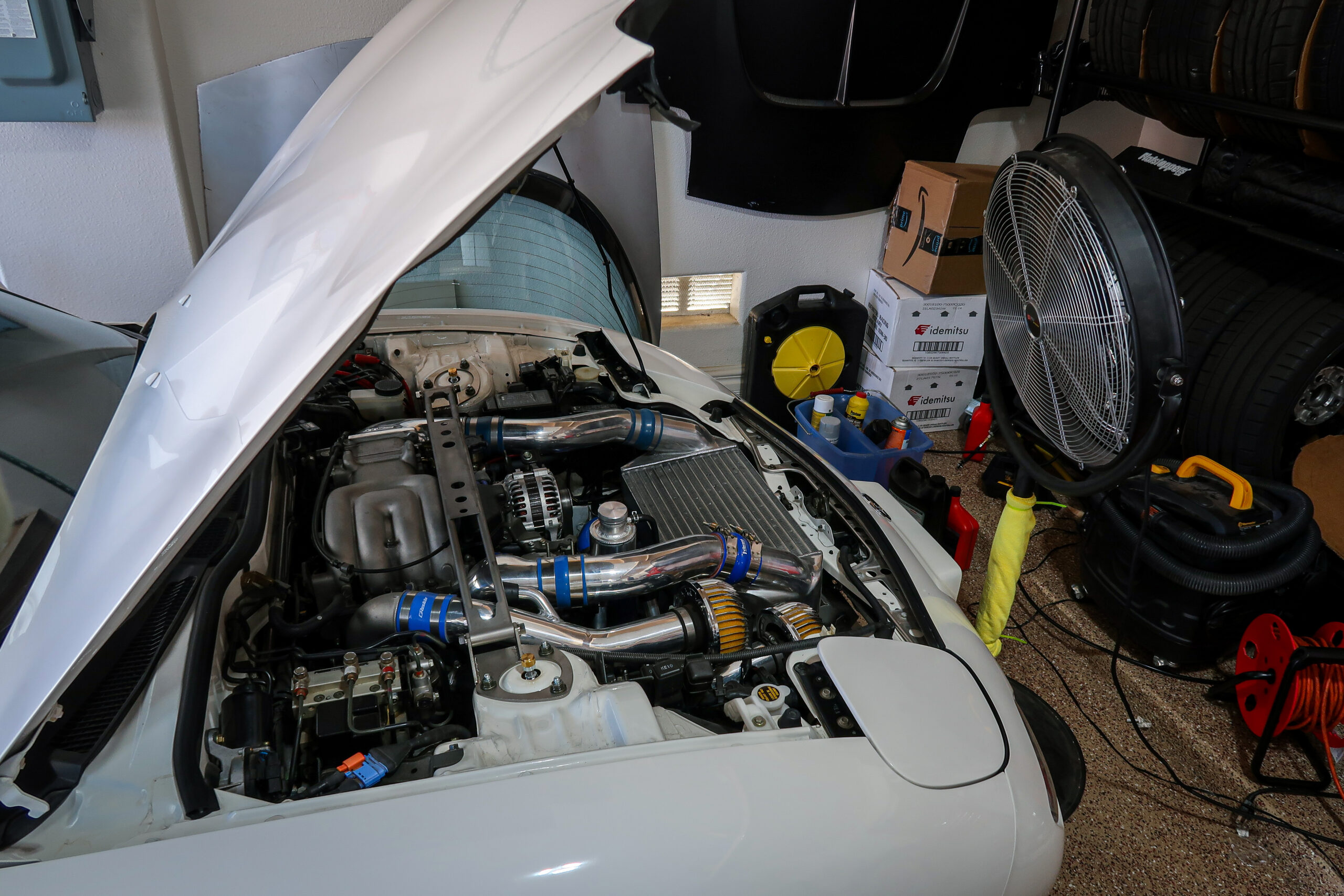
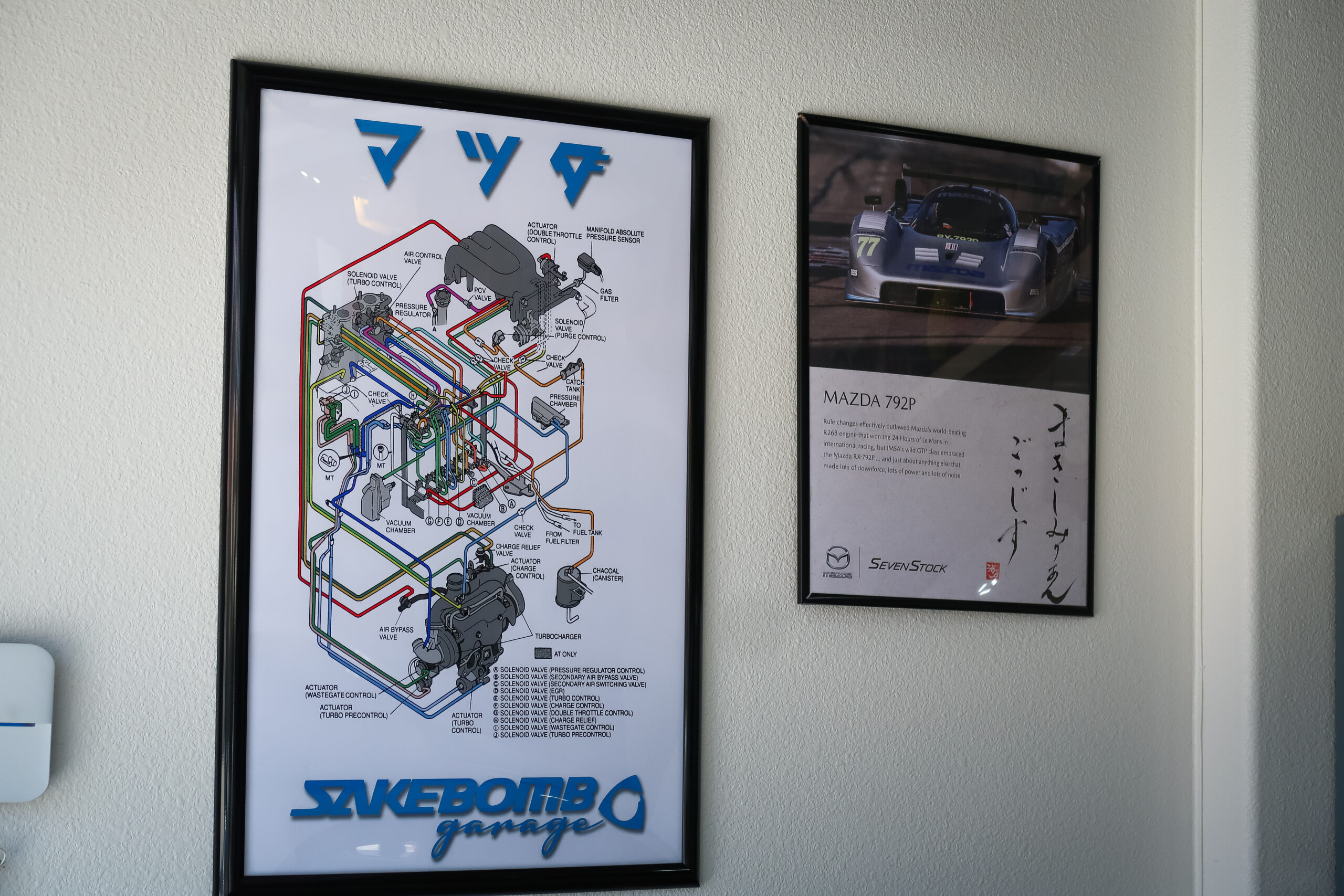
You Still Have To Commute To The Touge
For something so calculating, the result is shockingly… docile?
Start-up is painless. Its HKS Super Turbo catback is throaty yet reserved when it’s not coaxed. A tame exhaust and no engine porting create an RX-7 that’s content with gently wafting around town, with temps reading surprisingly cool on a hundred-degree summer day. The most hardcore aspect is the manual-converted steering, which utilizes an aftermarket rack designed for a Lotus. It was a quick concession for addressing a leaky steering pump, and even then, it’s not atrocious at low speeds.
Preserving this FD’s usability was a success. Even the OEM stereo works and sounds great and has been rigged so that Godges and I could rip to the tune of Super Eurobeat albums. You know. Like nerds.
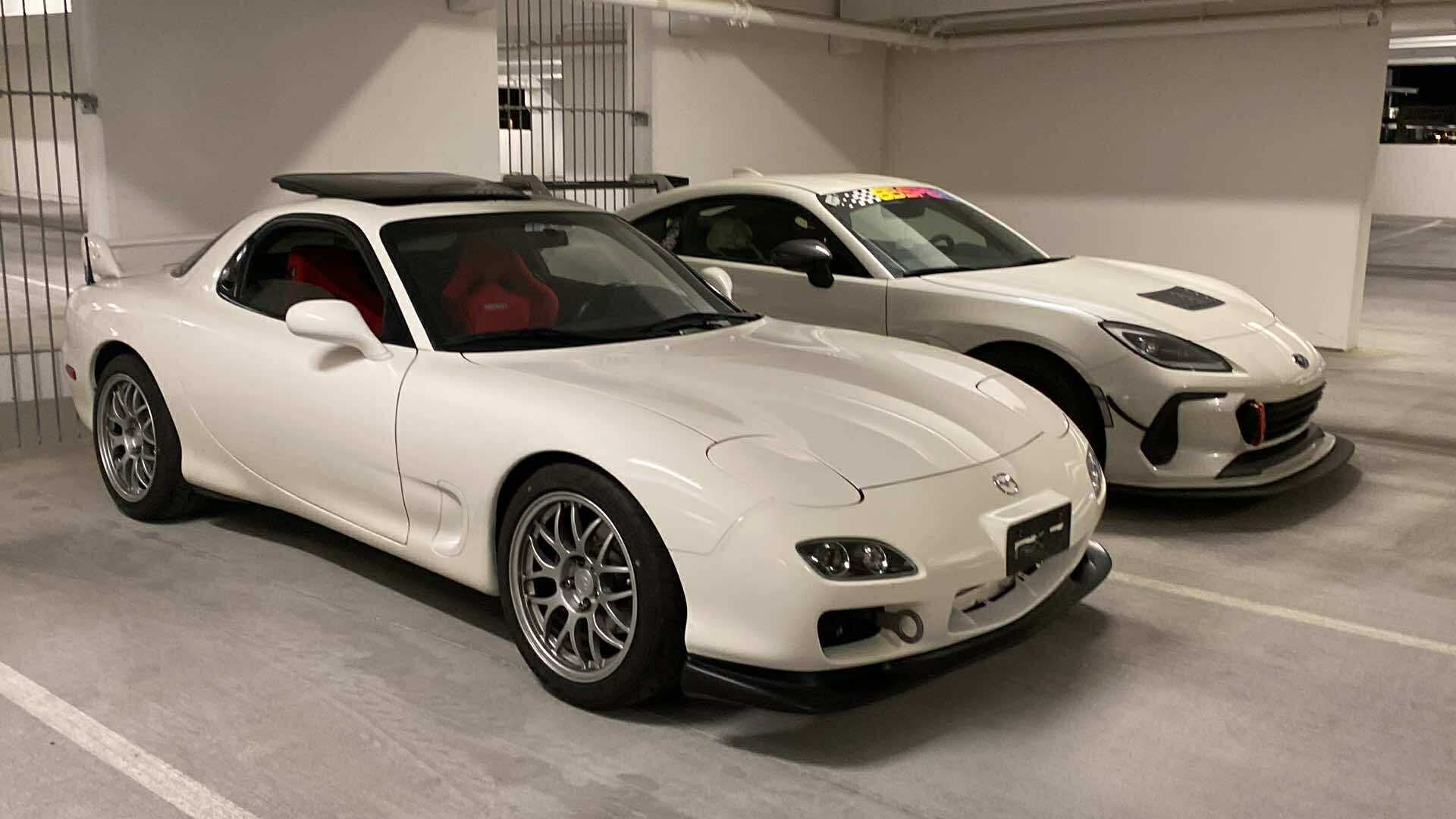
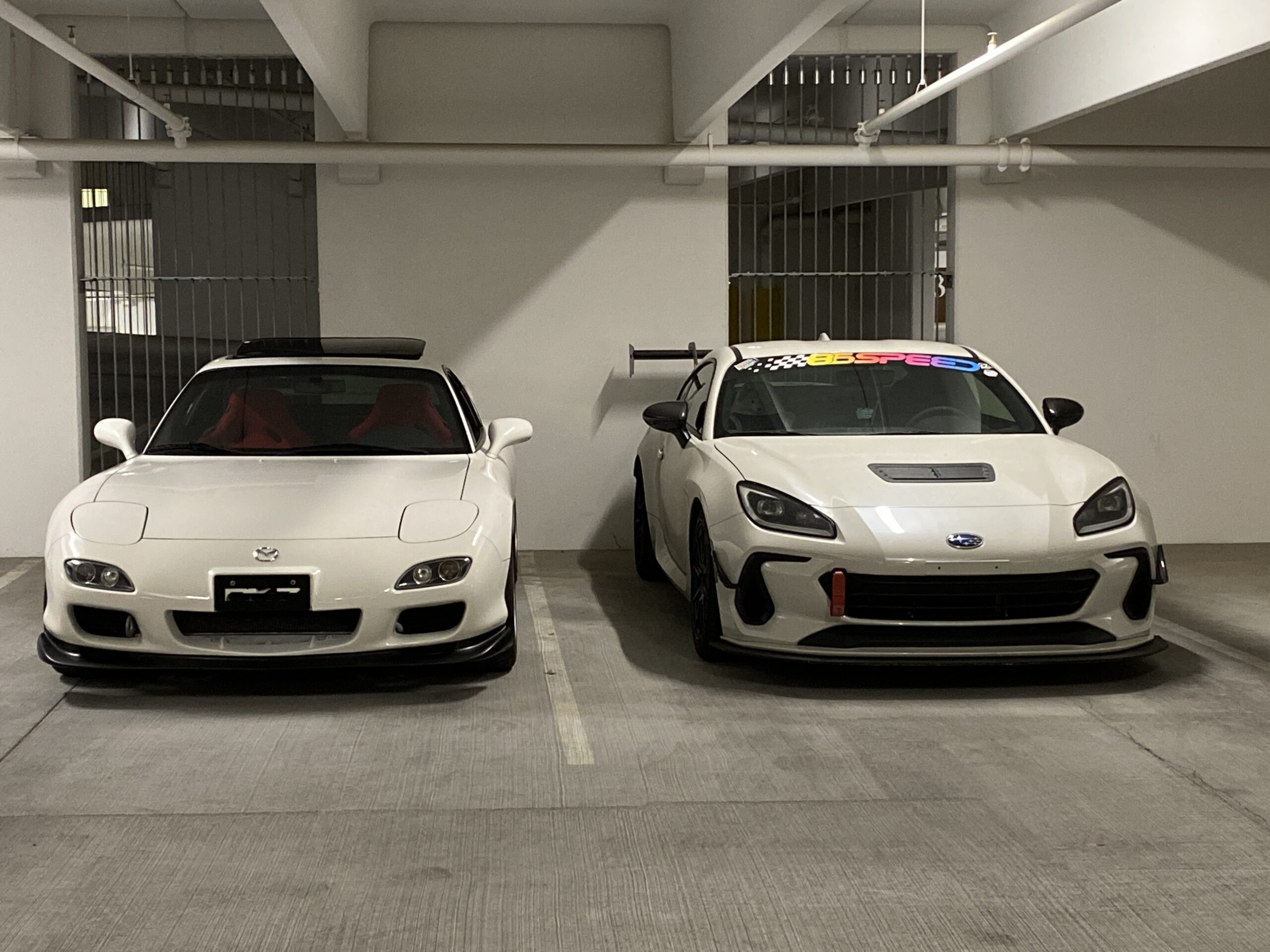
But, as I warn with all old Japanese cars, please sit in one before you buy! The FD’s voluptuous lines hide how tiny it is, as small as today’s BRZ, and its cockpit interior doesn’t feel much more cavernous than an NA Miata’s. Thank goodness, the cutesy sunroof in a car this small doesn’t eat up much headroom.
Otherwise, you can easily forgo a trailer and drive this to the track yourself, which its owner does. And yet, as livable as it is, once you’ve reached the track or back road you’ve spent hours in transit for, the RX-7 still isn’t shy to flaunt what it’s meant to be: An S-tier driver’s car.
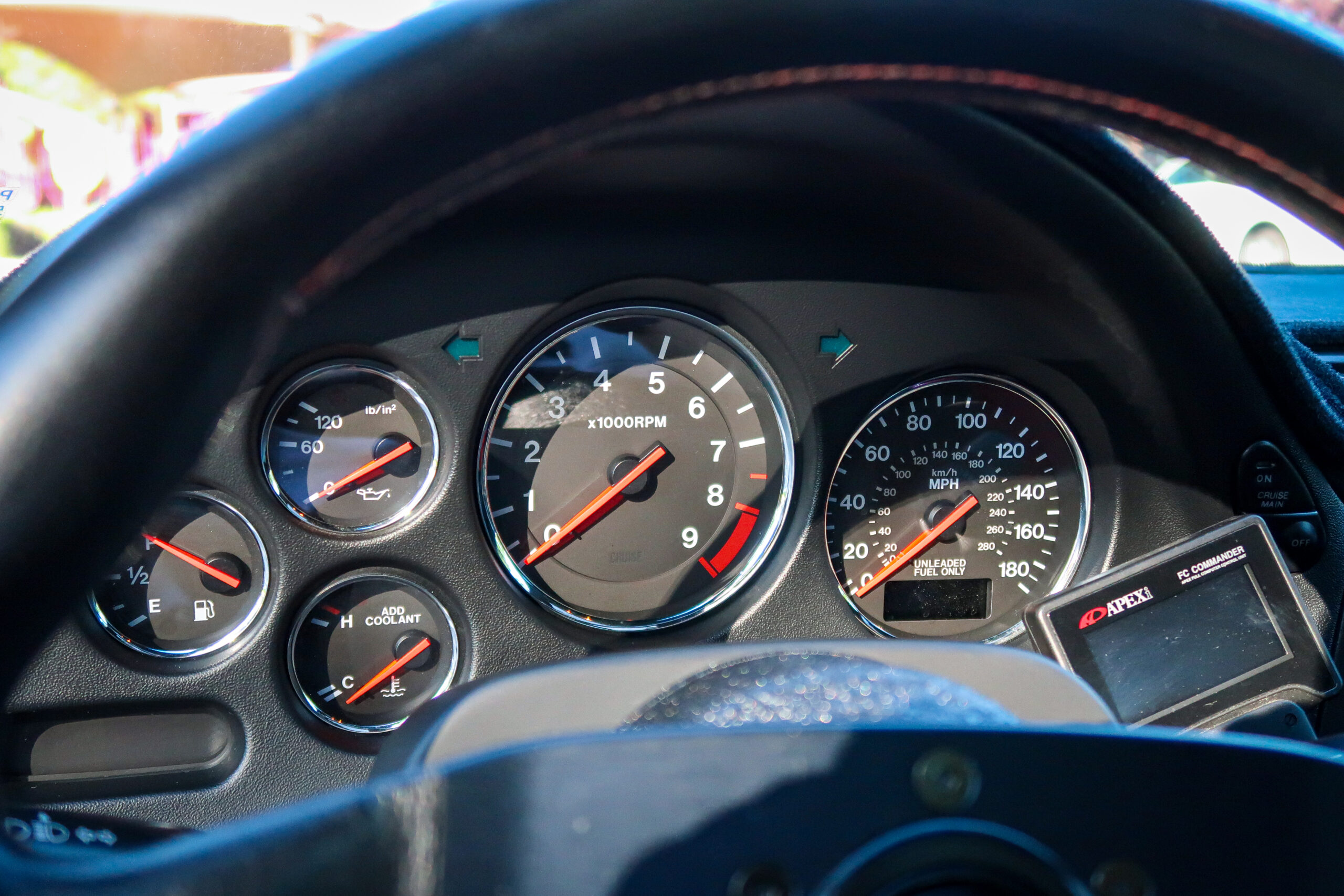
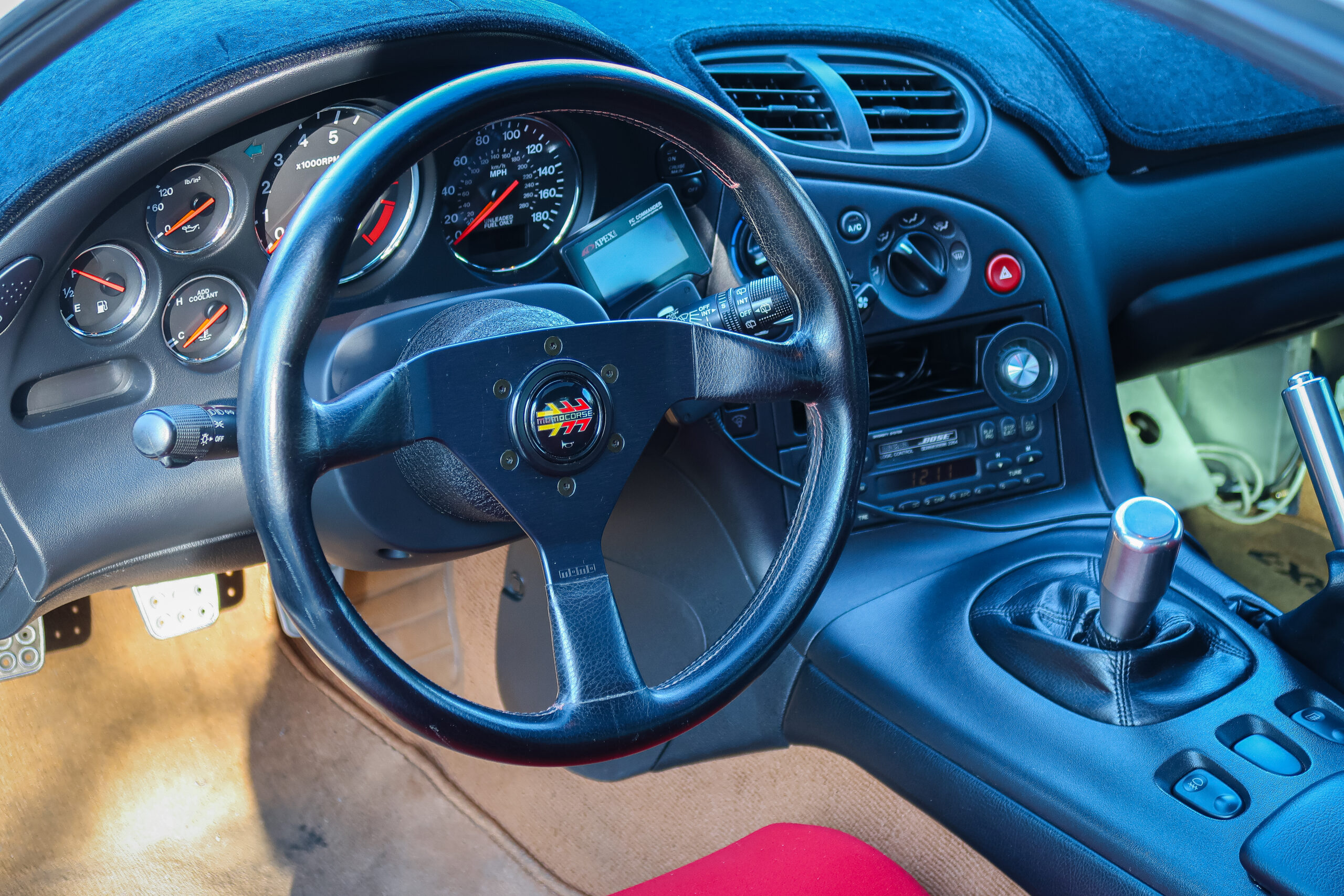
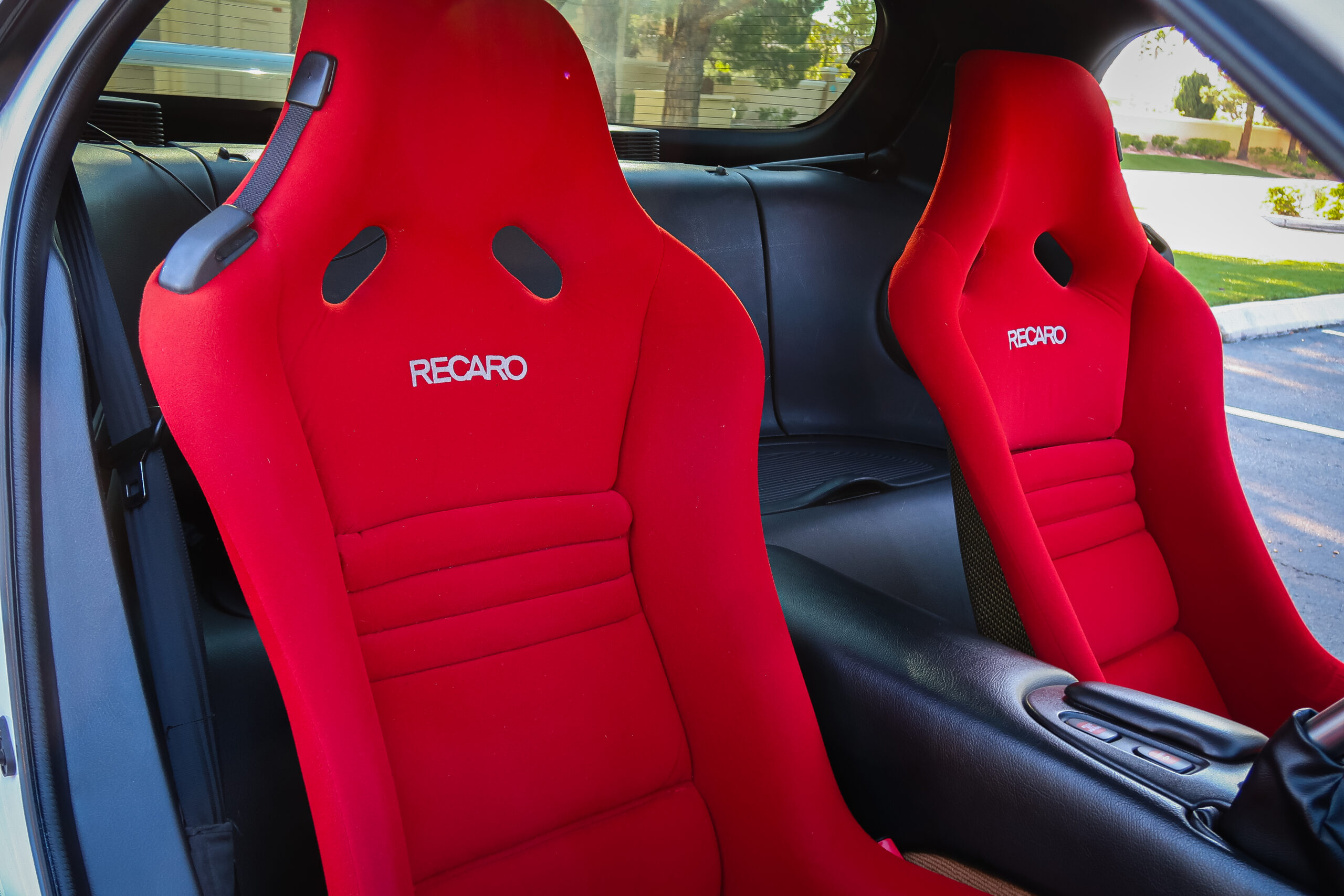
A Red Sun At Heart
I get why that loud-mouthed hot head from that one anime lived and died by this car, and it wasn’t just copium laced with plot armor.
“Even in a brief drive, the RX-7 proved taut, hunkered down, stuck to the pavement, quick, fast, and hard-edged,” MotorTrend’s Don Fuller noted in a first drive review. “It carves through canyons like a mean outside linebacker on a pass rush.”
“It’s sensational on the twisties out of Prescott—never any duress or doubt,” Car and Driver staff praised in a 1993 comparison. “The bite, balance, and brakes are A-1. Just about perfect for going the snakiest way with little chance of getting bit.”
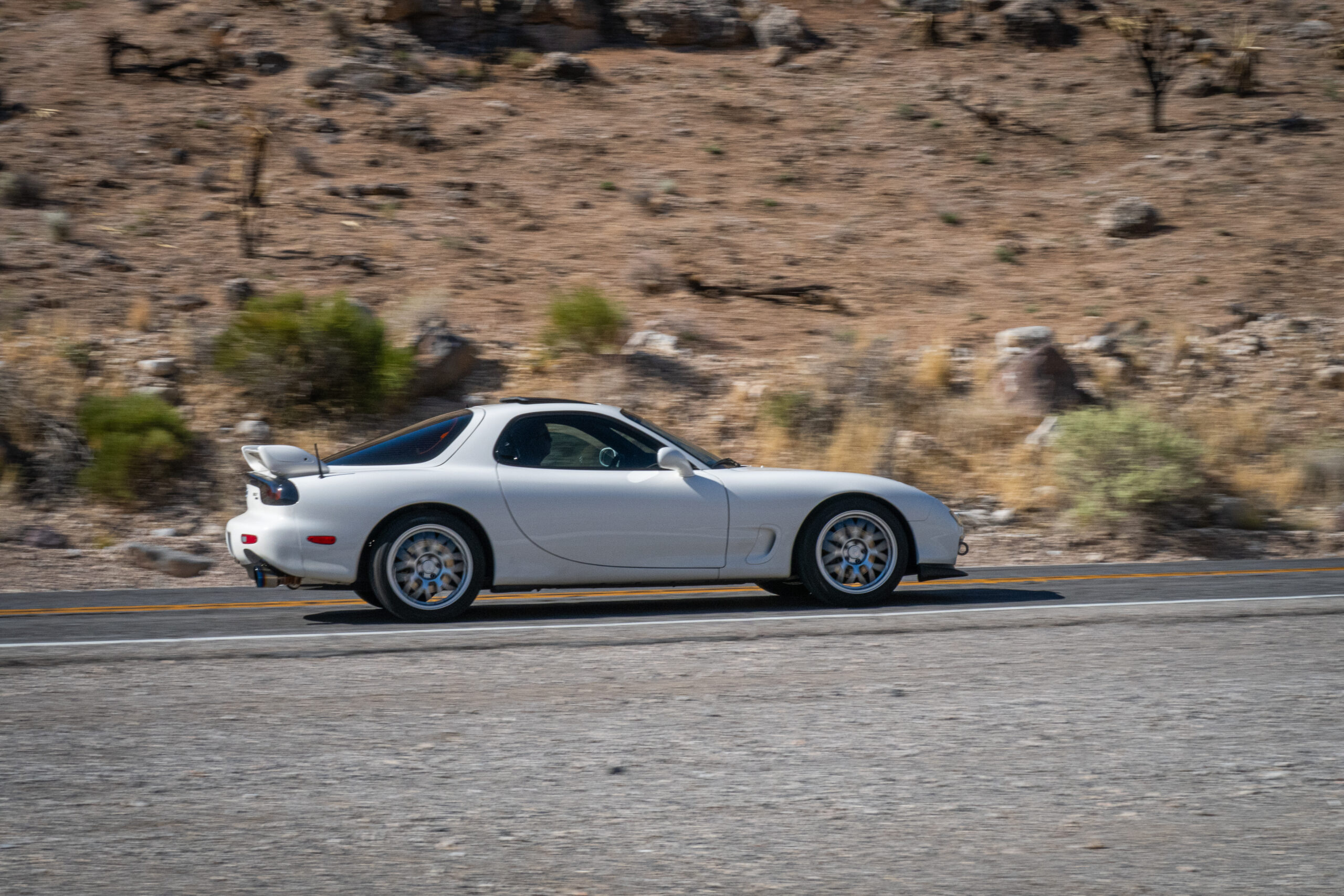
Now, with over a hundred more ponies than stock, the only thing getting bit by an RX-7 is the road beneath you. And speaking of. Where were we in the beginning? Right. Buffoonery.
Swinging this thing from hairpin to hairpin, sweeper to sweeper, the Bridgestone RE-71 tires enveloping the squared set of SakeBomb Garage wheels, reimagined replicas of the RX-7 Type RZ wheels, never relinquish grip at a fast back road pace. The FD’s advantages in agility compared to a Skyline GT-R and chassis communication compared to today’s GR86 are otherworldly.
There’s feedback through the bottom of the Spirit R Recaros. There’s feedback through the floorboard. There’s feedback through the top of the gear lever and the edges of the steering wheel. There’s feedback everywhere.
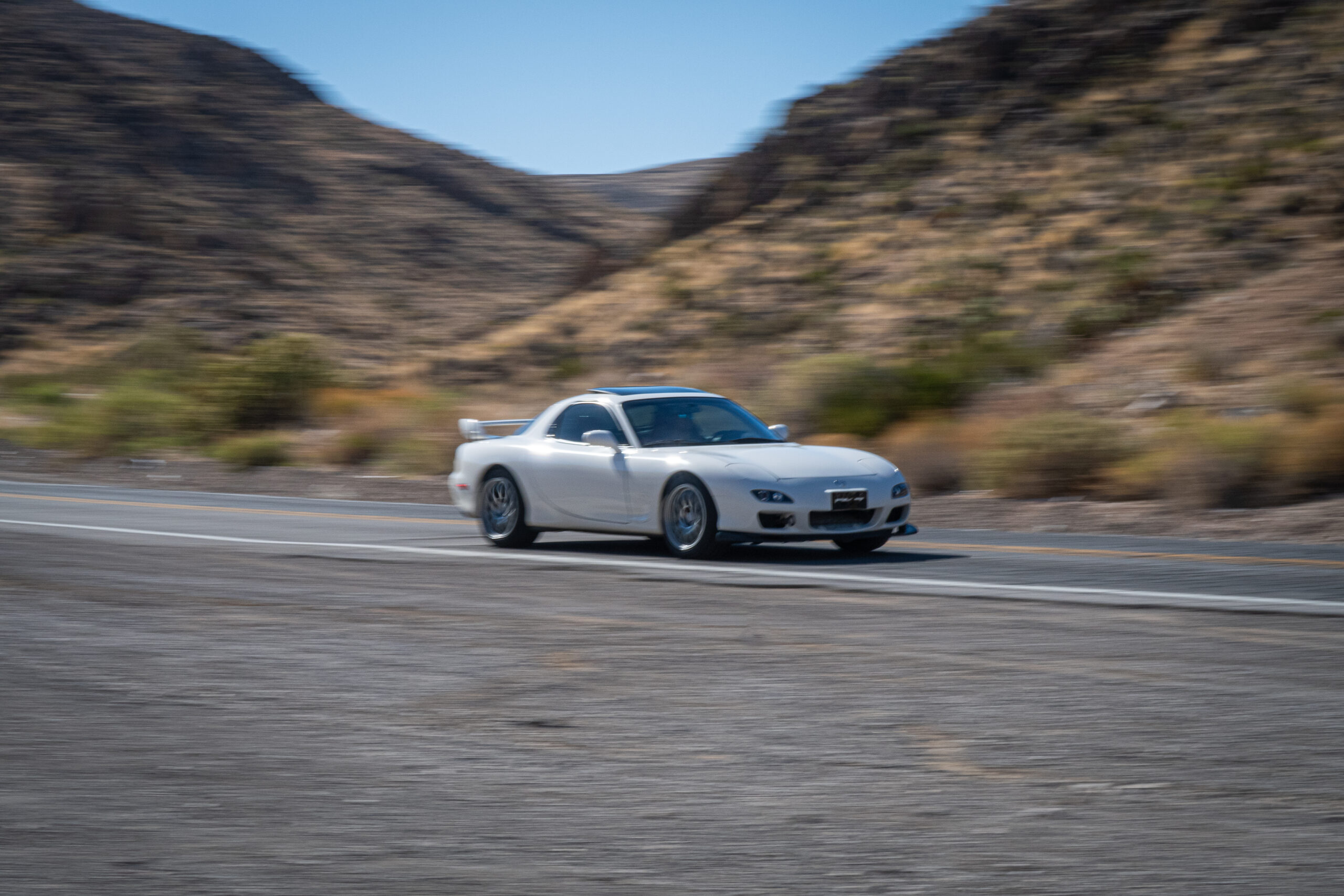
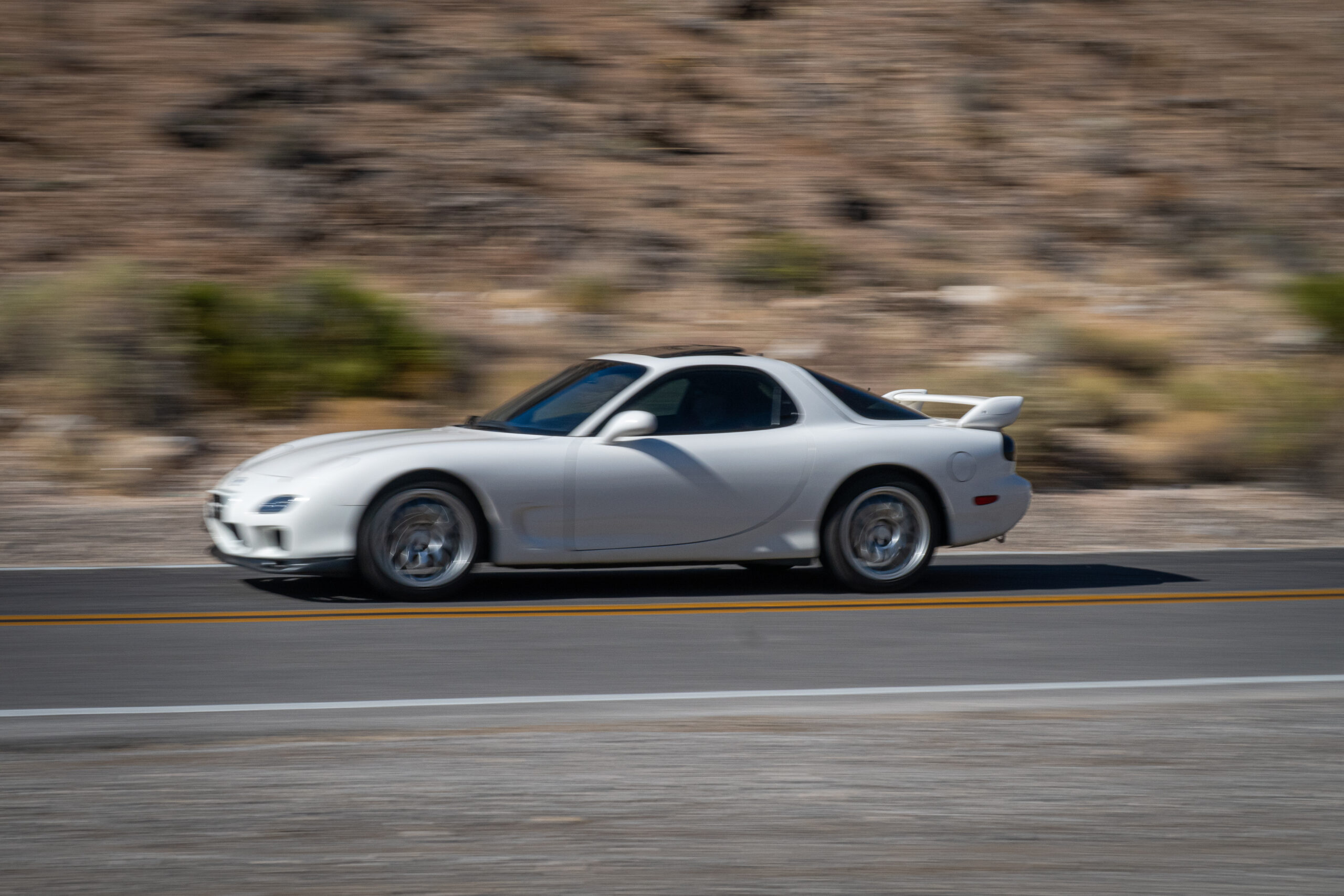
The manual steering rack lightens significantly at speed but weighs back up with load, transmitting Morse code from the front tires, and is utterly devoid of play or numbness. These reverberations tell you exactly how the car feels. However, sensations over rough tarmac can make your palms ache if you white-knuckle the wheel too hard.
The brake and throttle pedals are spaced for effortless heel-toeing and weighted for excellent modulation. Other old cars can feel too heavy, while newer cars often feel way too sensitive. The Miata-like shifter works a smartly ratioed five-speed that never felt too short or long-legged on the tight asphalt ribbons draped over the state line.
The Öhlins Road & Track coilovers yield an impressively compliant ride at all speeds. The car is never upset over Goodsprings’ tattered two-lanes that have never been maintained since 842 A.D. Body control remains superb. Double-wishbone suspension at all corners keeps alignment and handling predictable.
As for the 13B rotary, this massaged example blends assuring smoothness with a spicy zing as it shrieks to its 8,250 rpm ceiling, 250 rpm higher than stock. Its estimated 360 horsepower is plenty to keep its 2,800-pound frame glued to the ass end of more powerful cars. 0-to-60 in 5.3 seconds and the quarter-mile in 14.0 seconds at 100 mph for stock cars is believable, and I won’t be shocked if this one can beat down on today’s muscle cars.
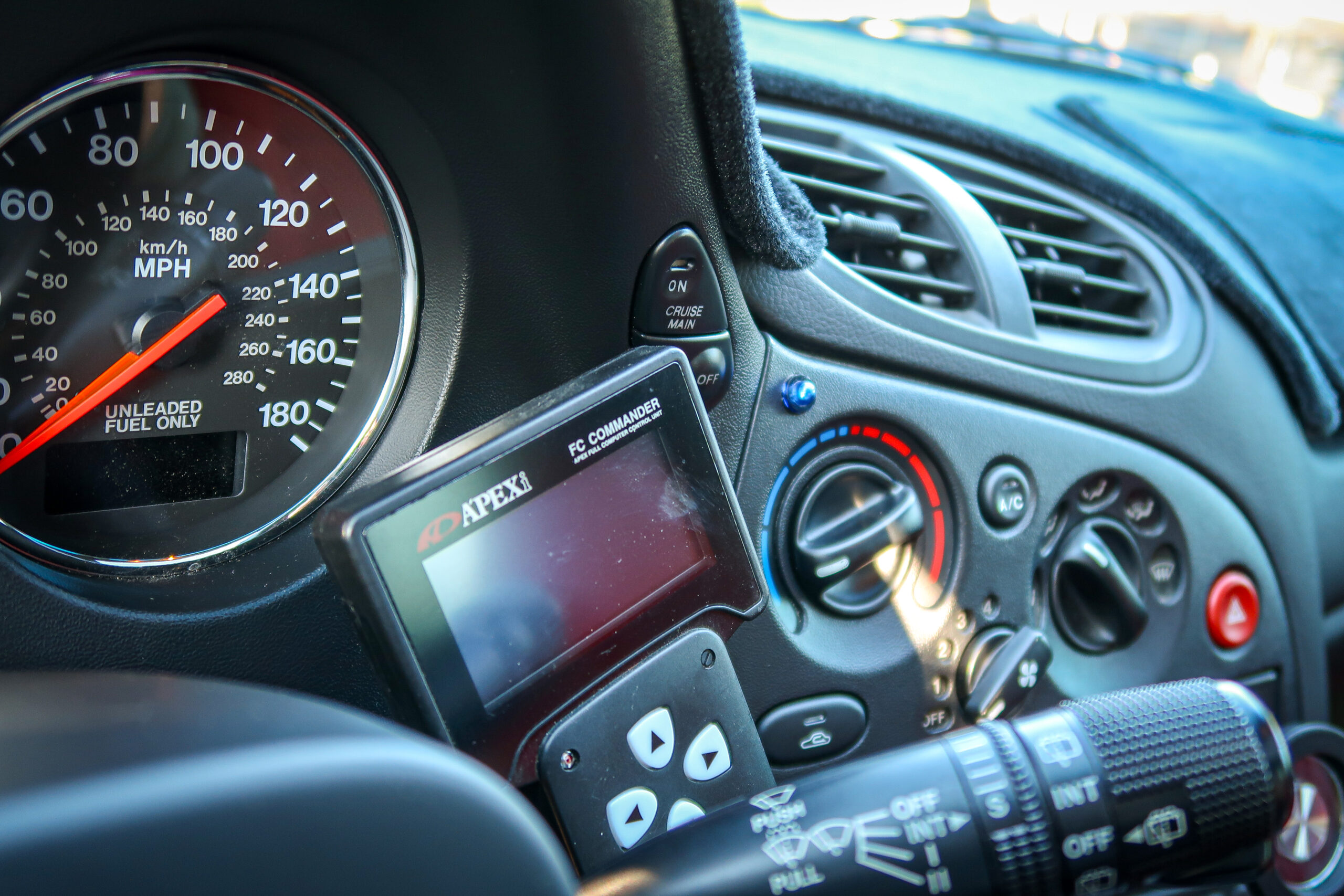
The notorious torque dip as the twin turbos perform their sequential activation is felt for only a split second. Godges believes the tune on his A’PEXi Power FC has considerably smoothed the powerband. Although I can’t speak for a bone stock RX-7, what remains is amusing and mostly unobtrusive. However, I’m warned of being caught off guard mid-corner by that 4,000-rpm boost creep.
“These were considered widow makers in their day,” Godges lightheartedly notes. “There’ve been a few times on track where I’ve felt it want to snap because the turbos suddenly surge in the middle of a corner for just that moment. It’s charming in its own way. But man.”
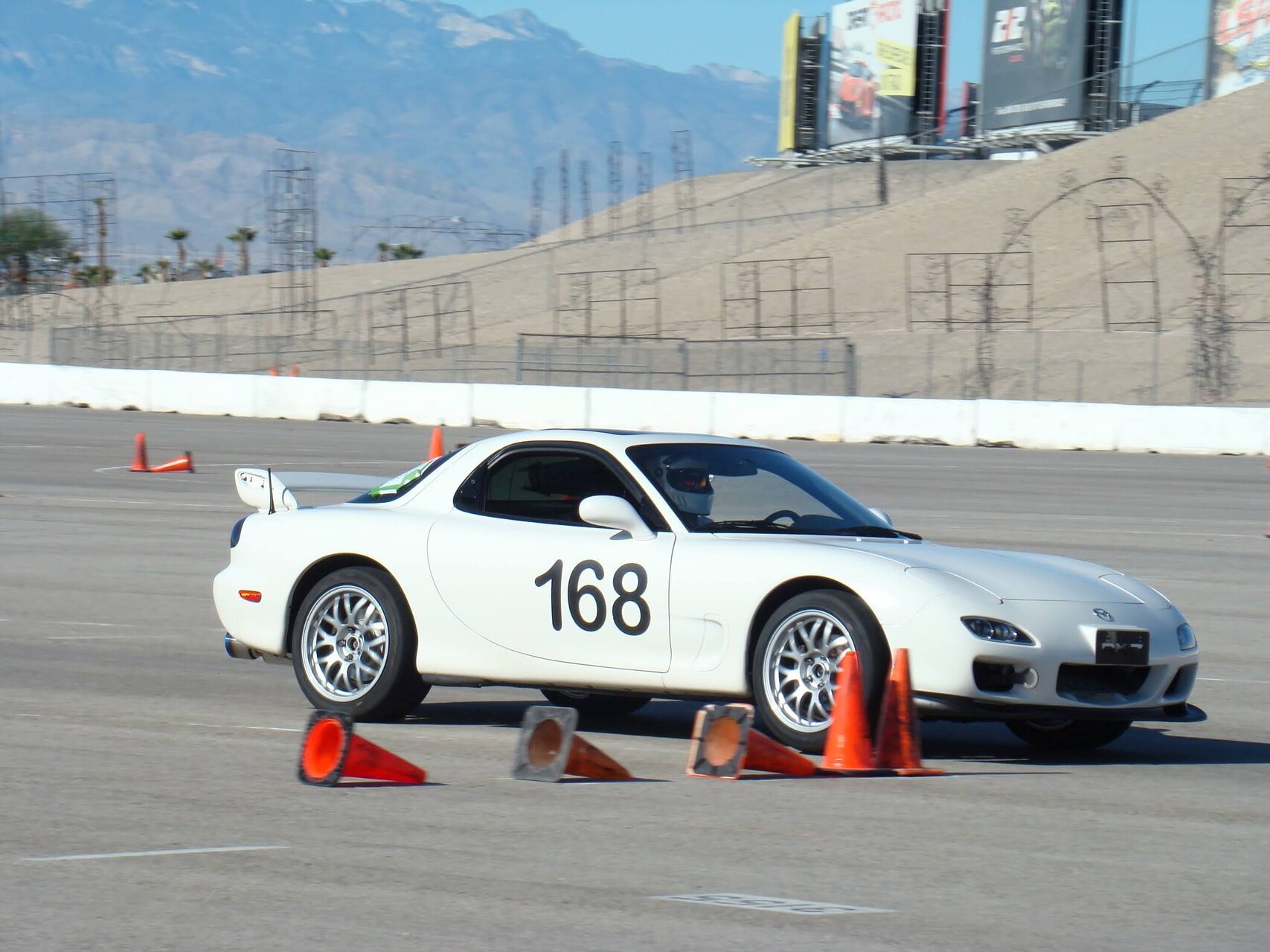
An All-Time Great Now and Forever
If it wasn’t already obvious, no, a Mazda RX-7 isn’t for everyone. No shit. Godges says so. Seemingly, all my rotary-owning friends implore so. “Don’t buy an FD, bro,” is the number one thing FD owners tell me. Too many maintenance woes for a level of speed that can be found elsewhere. Fine, fine, I get it.
But c’mon. Just let me smoke the same pipe they’re smoking. I want whatever has them believing that a little premix and the threat of flooding because you moved your car three feet are worthwhile compromises for this kind of high.
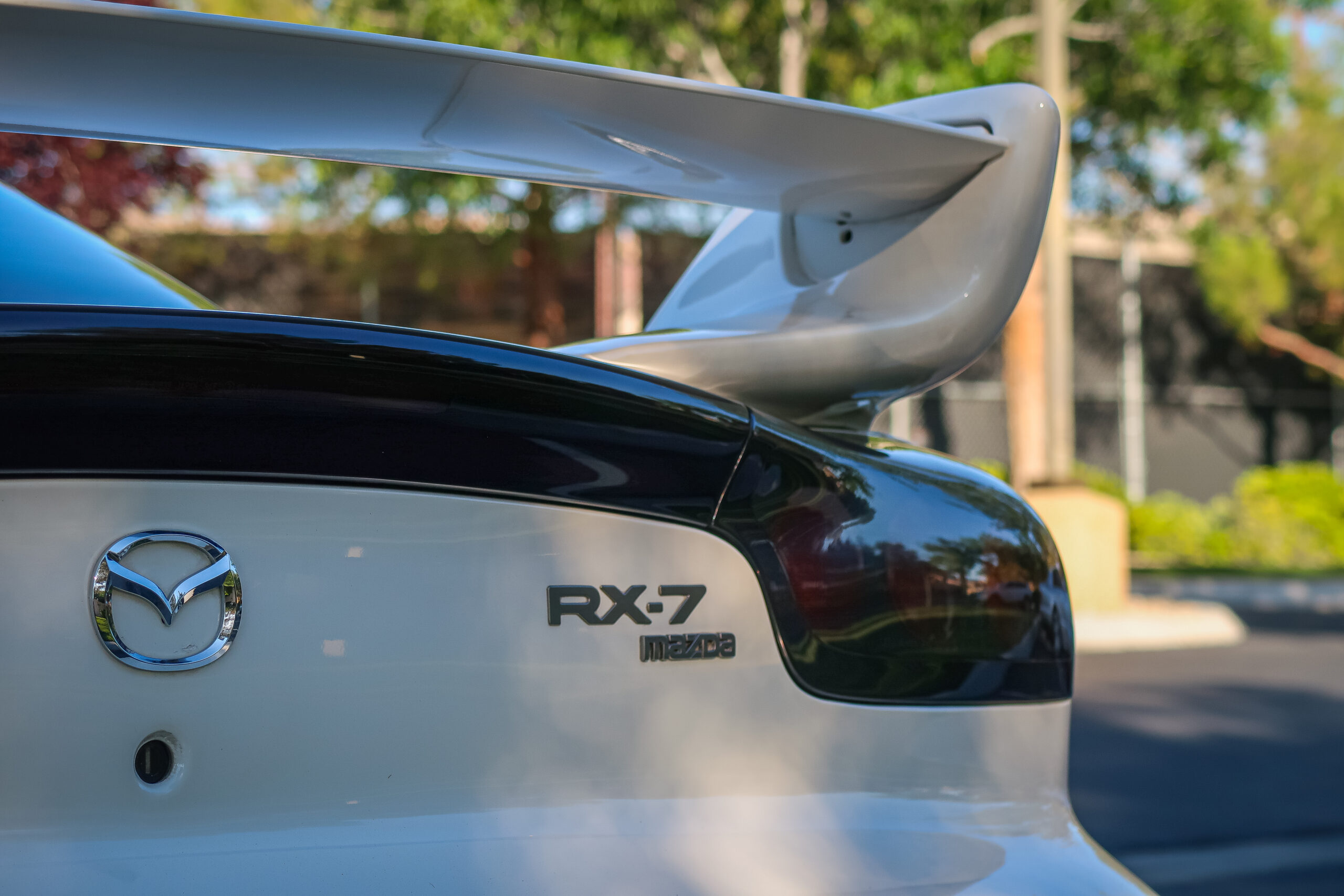
Keisuke Takahashi was right. The Red Suns were right. Han Lue, Orange Julius, and 2001-era Dominic Toretto were all right. The FD Mazda RX-7 stands tall among the best driver’s cars, both of its age and the present day, and thrashing one with a fire in your heart and Eurobeat in your ears is worth every moment of your anime or video game fantasies. It’s that good. Or, well, at least this little white comet is that good.
Now, Mazda. Finish the production Iconic SP, already.
Published in Reviews

